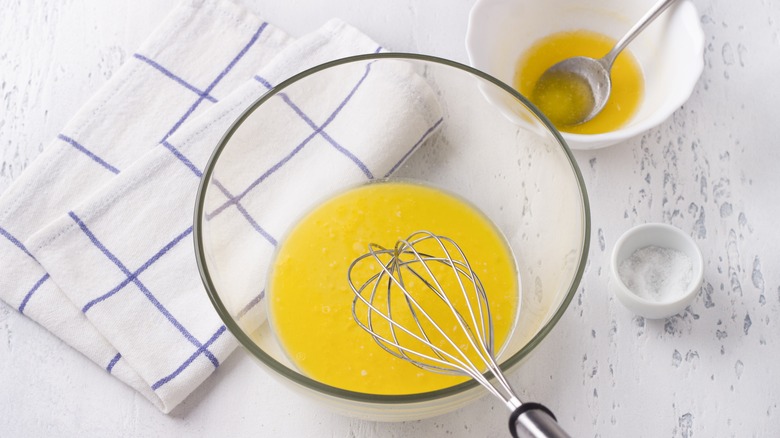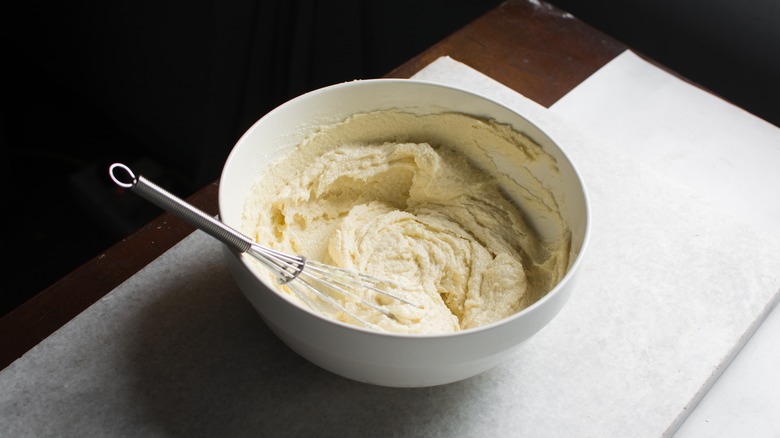Science Says You Can't Cream Sugar With Melted Butter
Creaming sugar with butter may seem like just a basic process of combining two delicious things for your cake or cookies, but there is a lot going on behind the scenes. The purpose of creaming isn't just to create a smooth mixture to combine with other ingredients, it's to add structure and texture to your baked goods. How you actually mix your sugar and butter (including the butter's temperature and how long you beat them together) can result in radically different results even with identical recipes. Most recipes call for room-temperature butter, but as a shortcut to letting butter sit out for hours, it's tempting to soften butter quickly by melting it in the microwave. The one problem with this is that you can combine sugar and melted butter but you can't actually cream them.
The science behind creaming sugar and butter is pretty simple but meaningful for your baked goods. When you whip butter with a mixer, you are smashing it and then folding it over itself, creating small air pockets. These air pockets are important for the texture of your recipe, as they will provide lift and also capture gasses released by baking soda or powder, resulting in a softer, fuller cake or cookie. Sugar boosts this because the crystals provide friction that helps create those air pockets. But, for that to work, the sugar needs to stay solid at first, and if your butter is liquid, the sugar will dissolve into it.
Melted butter won't produce the air pockets you want when creaming with sugar
When creaming butter and sugar, you are looking for a lightness to the finished mixture, and melted butter just won't produce that. Whipping sugar and melted butter can create some air pockets at first but, once it's left to rest, all those pockets will quickly collapse. You can see this in the mixture, as properly creamed butter and sugar will be soft, uniform in texture, and lightly colored, while melted butter will leave you with a greasy, grainy texture where the fat is separating out. A poorly creamed mixture will also pool into a flat mass, while well-creamed butter will be fluffy and be able to stand with stiff peaks.
So what's the right texture when creaming butter for baking? It should be soft enough that you can press your finger into it and easily leave a dent, but not warm enough that it's getting greasy. This actually happens a little below room temperature when it's still slightly cool to the touch. If you want to get super scientific about it, 60 degrees Fahrenheit is the sweet spot, and anything above 70 will be getting too warm. Also, remember that adding sugar and beating it will raise the temperature, so air on the cool side as long as it's soft. It may seem finicky to get so precise with butter temperature, but the perfect bake for your recipe is worth the effort.

